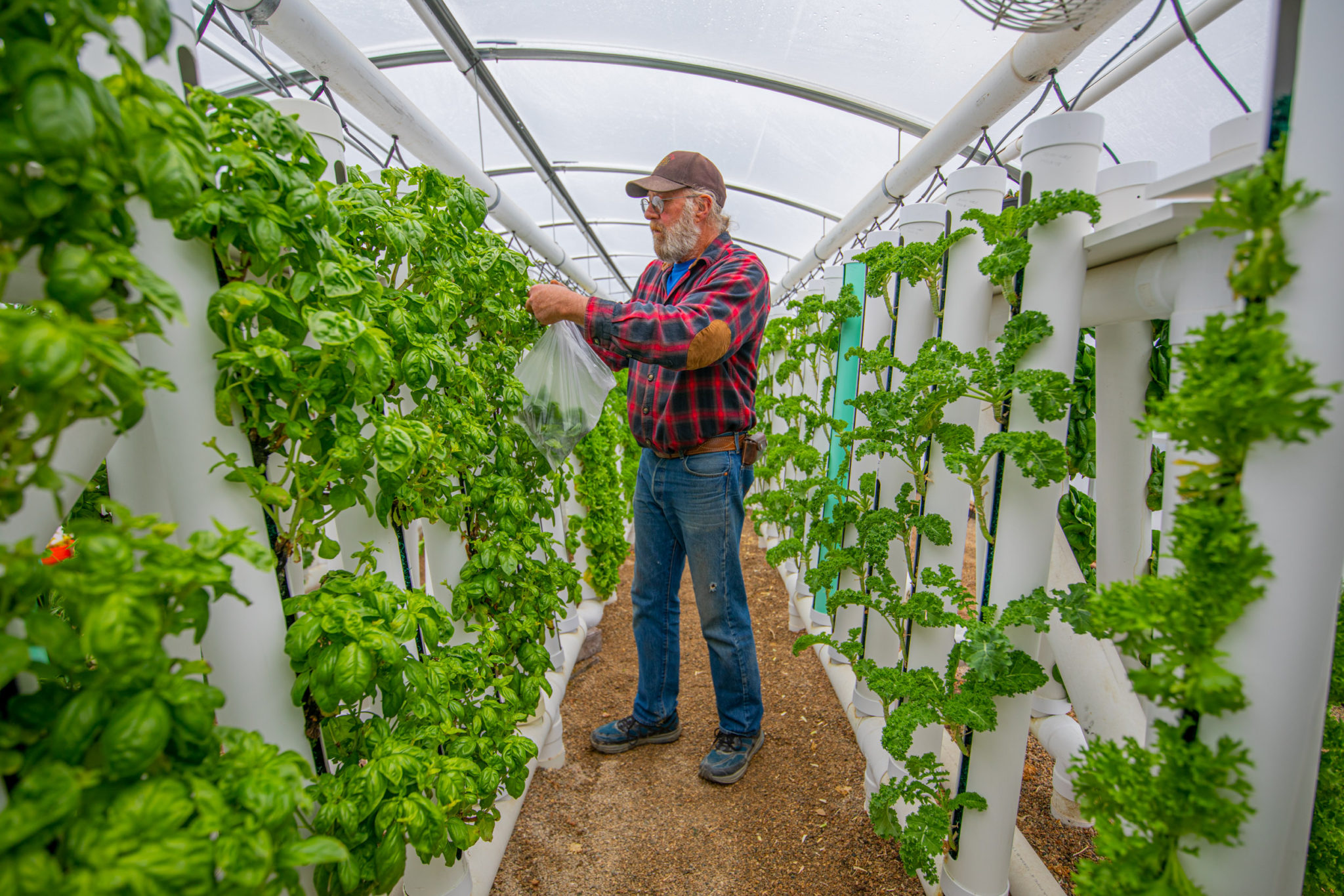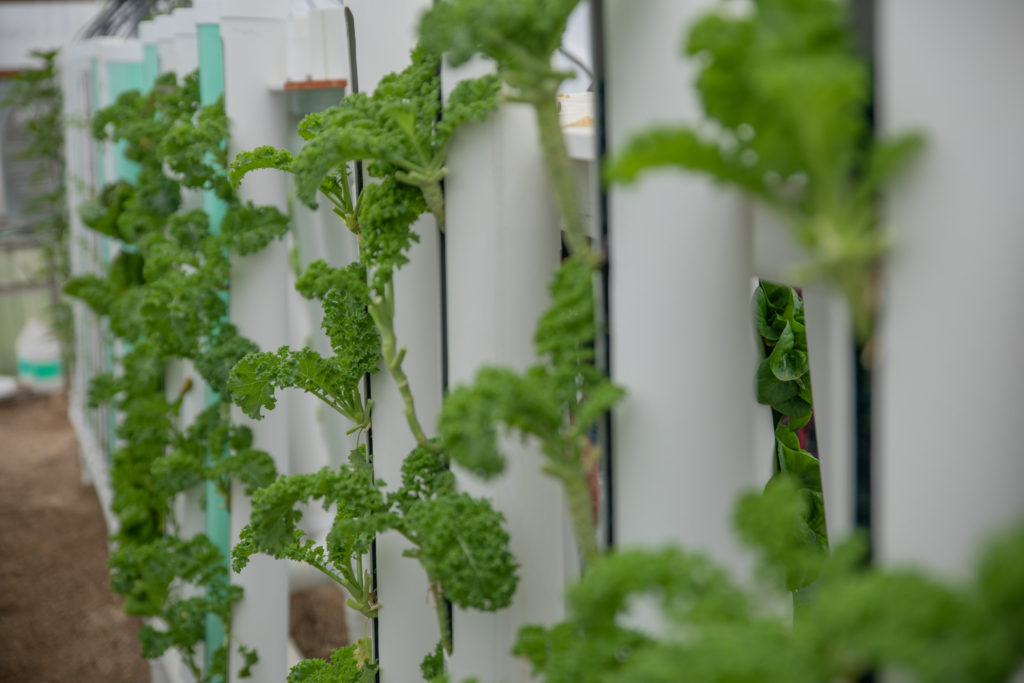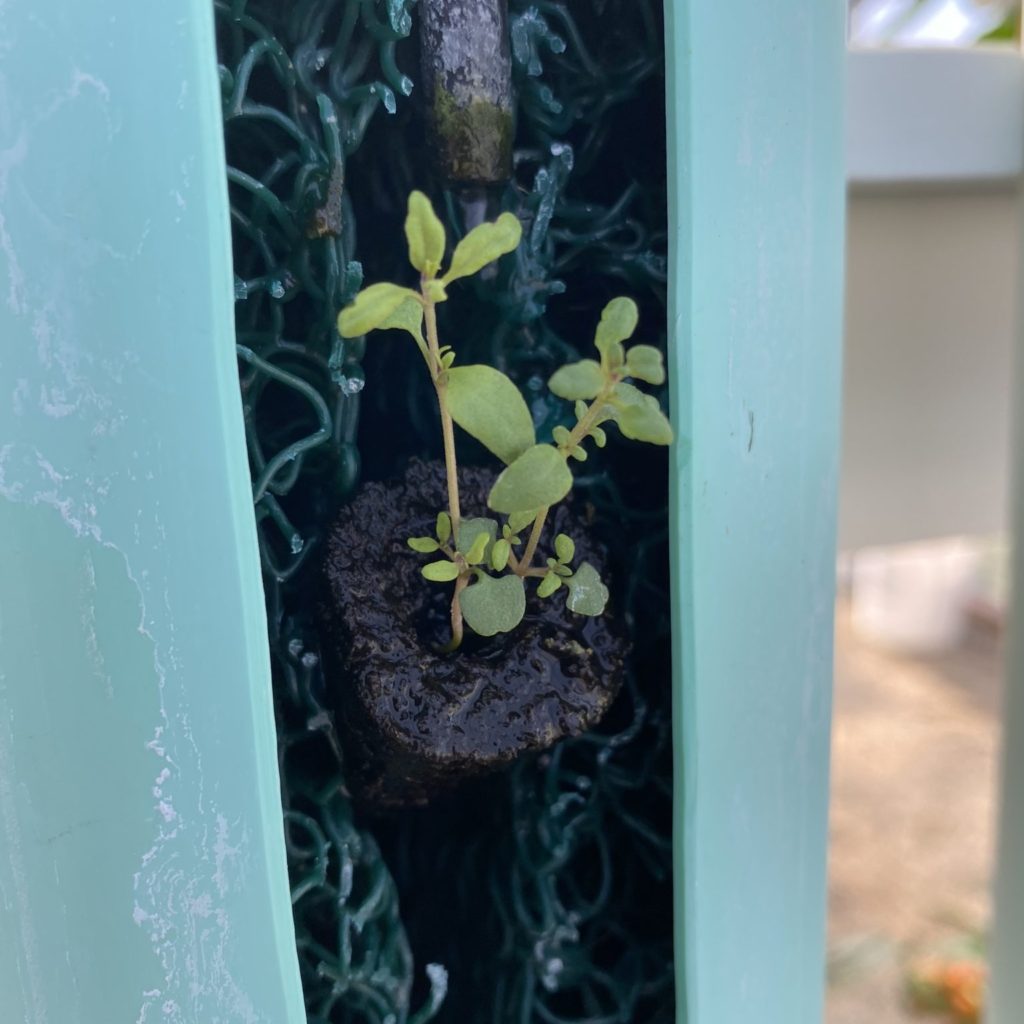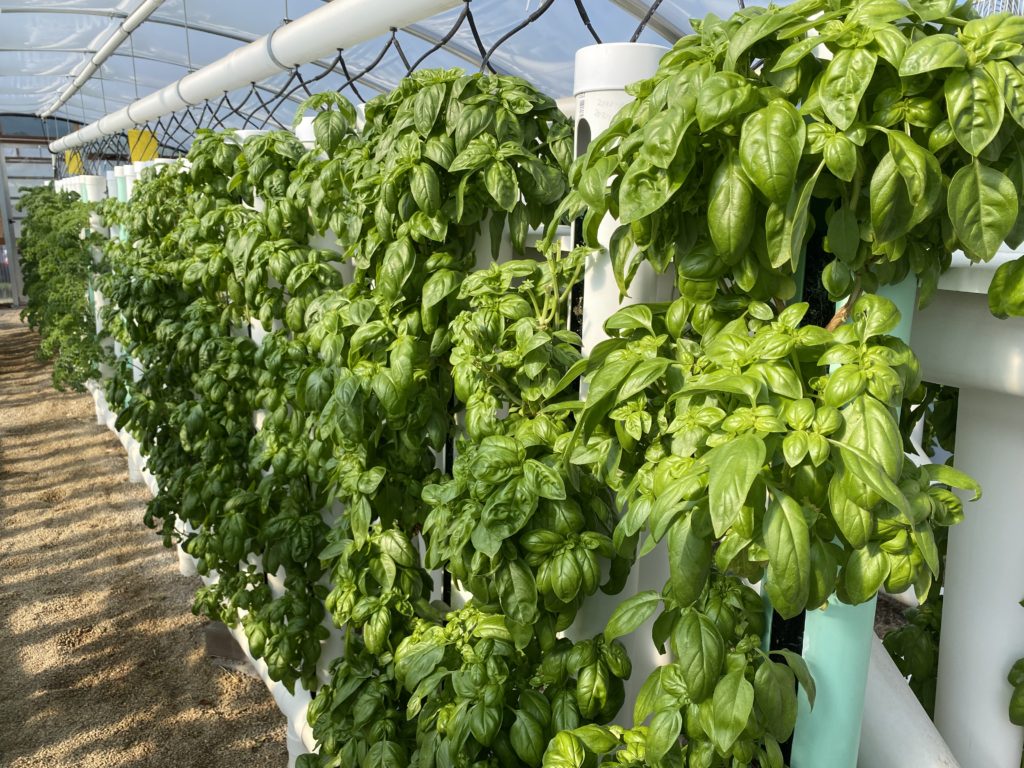
Vertical NFT Hydroponics
Papa Joe’s Produce is known for our year-round leafy greens more than anything else. Few things are more exciting than the reactions we get bringing farm-fresh produce to the farmers’ market in February.
Year-Round Operations
By growing our leafy greens in a sealed, climate-controlled greenhouse we’re able to grow plants year round, even when Wyoming winters drop the temperature well below zero. We’ve operated our first greenhouse for more than eight years, beginning testing and development in late 2015.
Vertical NFT Hydroponics
This first greenhouse utilized a vertical nutrient film technique (NFT) hydroponic system that we’ve designed and refined over eight years of operations. These towers take our footprint up instead of out. Over time, we have focused the majority of production on deep-water-culture hydroponics, but still operate a vertical NFT system for long-term leafy greens.
Although water continuously circulates through the system, the closed-loop design keeps overall water consumption very low. We check our water and nutrient levels on a daily basis to ensure optimal conditions for crisp lettuce!

Hydroponic Crops

We have successfully grown a variety of crops in the vertical system, including:
- More than a dozen varieties of lettuce
- Kale
- Swiss Chard
- Basil
- Arugula
- Spinach
- Parsley
- Cilantro
- Thyme
- Leeks
In addition to the crops listed above, our system has been an ideal incubator for starting clones of other crops. These crops are transplanted to other growing media once established. However, during the initial stage of cloning the hydroponic tubes provide a steady flow of nutrients for the plant to re-establish roots. We’ve successfully cloned the following plants, and are constantly trying out new things!
- Tomatoes
- Sweet potatoes
- Strawberries
- Rosemary
- Sage
- Peppers
Long-Term Hydroponics
One of the advantages of the vertical system is its suitability for long-term hydroponic cultivation. This is especially true for multi-harvest crops such as kale and basil, where leaves can be plucked while leaving the plant base to grow further. Aside from harvesting, the largest labor cost involved in this greenhouse is cleaning tubes and media between crops.
Crops that allow multiple harvests reduce the number of times that tubes must be cleaned/re-planted over time, which improves the economics of running the greenhouse.
For example, when measuring profitability we typically use lettuce as our baseline crop because it is one of the simplest and most profitable greenhouse crops. To compare crop yields, we measure revenue per week as (yield oz per head x heads per tube x $/oz). Over the course of the year, our lettuce averages 8-10 weeks for maturity. Crops such as kale typically produce a lower tube yield per week; however, it begins producing in 6-8 weeks and continues to produce for months. So, in 16 weeks we can harvest two crops of lettuce, or in the same timeframe can usually harvest 8-10 weeks worth of kale – without the labor of cleaning/replanting the tube in between. While the kale produces less per week, leaving it in the tubes long-term yields better lifetime revenue than lettuce.
A key to this long-term growth is the nature of the vertical system. Inside each tube is a robust grow media that holds the plants. The plants are able to develop strong root systems entwined in the media, which supports the plants as they grow larger and mature. For long-term growth, this is critical compared to deep water culture or ebb-and-flow hydroponics. Such systems provide adequate nutrient, but no support for roots to hold on to and support large plants.
With these strategies in mind, we now regularly grow several multi-harvest crops for extended periods of time – often 4-6 months. However, we’ve kept some of our kale and basil crops in place for 9-12 months!
